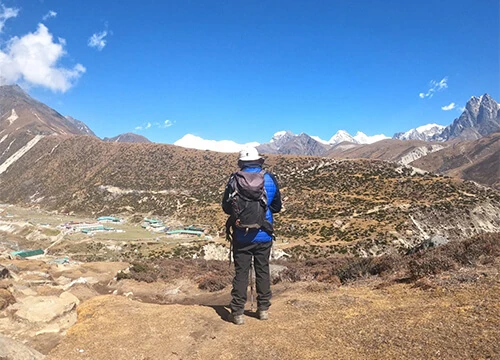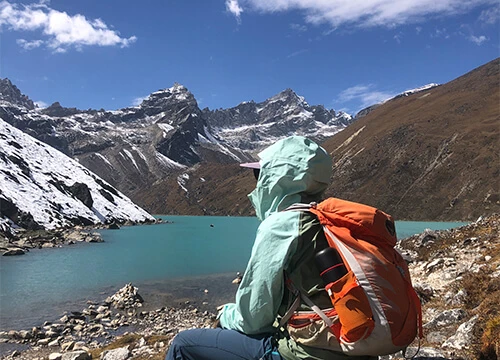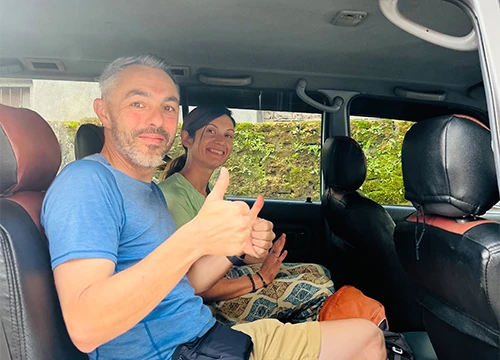Everest Region Trek
The moment we hear the word Everest region, the world’s tallest mountain Mount Everest (8,848m), and all the adventure and excitement that it holds crosses our mind. This region is no less than a pilgrim for avid trekkers. Known for its exquisite beauty, the Everest region is a paradise for every trekker and tourist. Trekking in this region is a journey that lets you dive into peaceful Buddhist communities, beautiful Sherpa culture and their warm, heartily welcoming, and appealing mountain vistas.
The region has ancient monasteries, lush rhododendron forests, thrilling hanging bridges, lovely waterfalls, stunning alpine lakes, many viewpoints, high mountain passes, glaciers, moraines, and whatnot. The majestic views of Thamserku (6,160 m), Everest (8,488 m), Ama Dablam (6,812 m), Lhotse (8,516 m), Nuptse (7,861 m), Cholatse (6,440 m), Pumori (7,161 m), Island Peak (6,160 m), etc and many other mountains are seen from every part of the trail.
Popular Treks
Everest Base Camp Trek, Everest Three Passes Trek, Everest View Trek, EBC Trek with Heli Return, Gokyo Lakes and Renjo La Pass Trek, Everest Scenic Trek, Everest Base Camp Trek via Gokyo and Everest Base Camp Trek by Road
Major Attractions
Namche Bazaar, Gokyo lakes, the enigmatic mountains, ancient monasteries and gompa, Sagarmatha National Park, Everest Base Camp, Kala Patthar, Cho La, Renjo La, Kongma La, Khumbu Glacier, Khumbu Icefall, Ngozumpa Glacier, and more
Best Time
The best seasons for trekking in Nepal's Everest region are spring or autumn. The spring season spans from March to May and is characterized by mild and stable weather, clear skies with excellent visibility for mountain views, including the iconic Mount Everest. During this time, the region comes alive with blooming rhododendrons and other wildflowers, adding to the already stunning scenery. The temperatures are comfortable for trekking, making it an ideal time for those looking to explore the Everest region. With clear skies and glorious weather, it attracts visitors from all over the world.
Entry Point
Lukla for direct flights and Everest region via land route, avoiding the Lukla flight. Travellers typically use private tourist vehicles, and the journey starts in Kathmandu, with a bus that includes both paved and unpaved roads. The estimated driving time to Salleri is around 8 to 10 hours, and beyond Salleri, the road transitions into a dirt track. It takes an additional 3 to 5 hours of travel to reach Kharikhola, which serves as the starting point for your trek into the Everest region. This description effectively outlines the land route alternative to the Lukla flight for travellers interested in trekking to Everest.
Food and Accommodation
Everest region, accommodations mainly comprise tea houses or lodges that offer basic yet comfortable rooms with twin beds and simple bedding. Some have attached bathrooms, while others have shared facilities. Luxury lodges are available in certain areas, providing more upscale amenities. Dining options include a variety of local and international dishes such as dal bhat, momo, and Western fare like pasta and pizza. It's essential to prioritize food safety and stay hydrated. Trekkers can purchase boiled or purified water and find snacks like energy bars and soft drinks at tea houses. Availability may vary, so it's wise to check conditions before your trek.
Permits Required
A new permit system has been implemented in Everest Region. You will no longer require a Trekker’s Information Management System (TIMS) Card. If you are following the Classic EBC Trek, you will need to obtain an additional permit for the Gaurishankar Conservation Area. This permit has to be obtained at Kathmandu in Nepal Tourism Board. This will cost NPR 3000 Per Person. You also need permits for the Everest Basecamp Helicopter Tour.
- Khumbu Rural Municipality Permit
The local government of Khumbu directly collects NPR 2000 Per Person from each foreigner. Please note that these permits cannot be obtained in Kathmandu. First, if you are flying through Lukla, you can obtain it from Lukla. If you are trekking from Jiri or Salleri, this can be obtained at Monjo.
- Sagarmatha National Park Permit
You can obtain it either in Kathmandu at the Nepal Tourism Board Office or in Monjo at the Park Entrance Gate. This will cost NPR 3000 Per Person.








.webp)